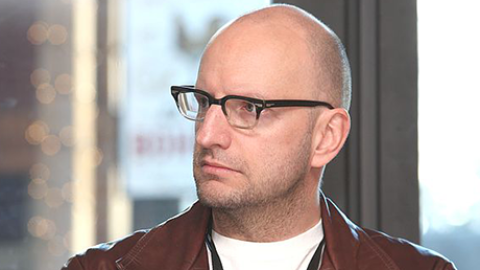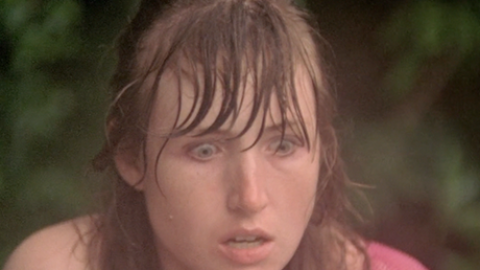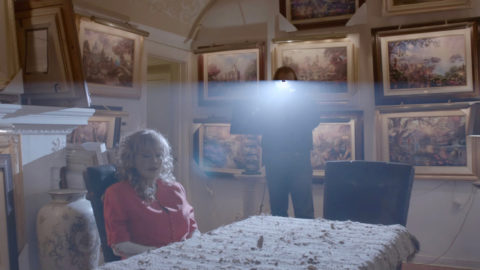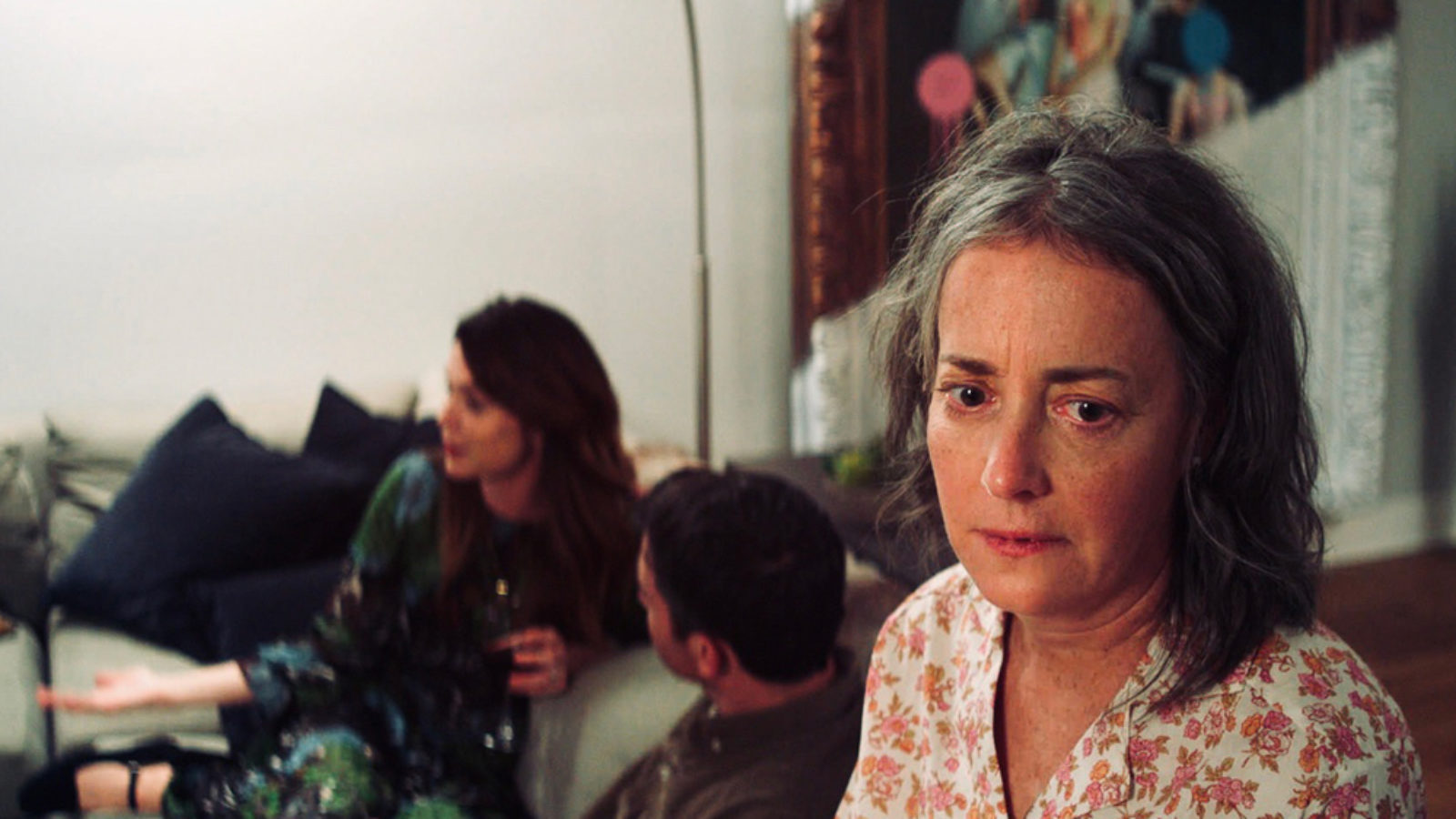
Future Shock: Amy Seimetz
The end is near in She Dies Tomorrow, a film about a woman consumed by the unshakable conviction of her imminent doom. Her morbid angst seizes others around her, one by one, like a contagion. Amy Seimetz’s new horror drama is just as much a poised mood piece, streaked with humor and set in bereft Los Angeles home interiors. Kate Lyn Sheil brings a brittle cool to Amy, the story’s initial focus, while stalwart Jane Adams plays her friend Jane, gripped by the same foreboding. (Kentucker Audley and Tunde Adebimpe co-star, with Josh Lucas as an overwhelmed doctor.) It’s a work of crystalline anxiety, a controlled movie about feeling out of control, and one inevitably bound up with our current moment of suspension and mortality.
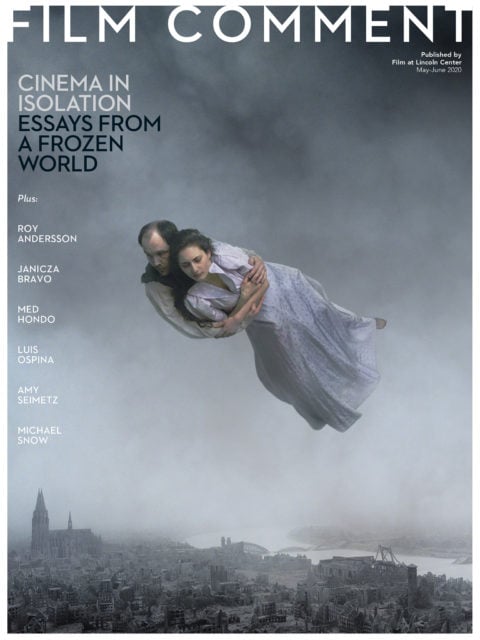
She Dies Tomorrow is also unmistakably a personal film, written, directed, and produced by Seimetz on a budget fueled by proceeds from acting in Pet Sematary. She’s also co-created and executive produced The Girlfriend Experience series for television, and directed the theatrical feature Sun Don’t Shine. Slated to premiere in March at South by Southwest before its cancellation, She Dies Tomorrow was acquired by Neon.
What was the starting point for the movie?
I knew the sort of beats that I wanted to hit, I knew certain moods that I wanted to hit, and I had these images of Kate in my house, acting very erratic. I’d just bought a house. I was trying to build something off this idea of a woman whose behavior goes from “sort of off” to increasingly alarming. It was for me, in a personal way, about dealing with anxiety in general and what that looks like from the outside. From there, I was going back to this period of time when I was extremely anxious and realized that I was talking about my anxiety a lot with friends. The more I talked about it, the more I realized I was spreading this anxiety.
When I bought my house, I was having this very strange feeling where I thought, “Am I supposed to feel something more for this entity?” I found myself touching my house to try to have a different relationship. But I realized how crazy that looked. And I thought that it would be funny but also disturbing to watch a woman who’s having this very bizarre relationship with her home, while getting increasingly emotional, in a way that we don’t quite [understand]—and let the story unfold from there.
A house is not a home, as the saying goes.
Atmosphere is such a big part of everything I do, and a lot of this movie takes place in my home and in my backyard. I knew the angles that I wanted because I live in the house. But I discovered things about my house while shooting.
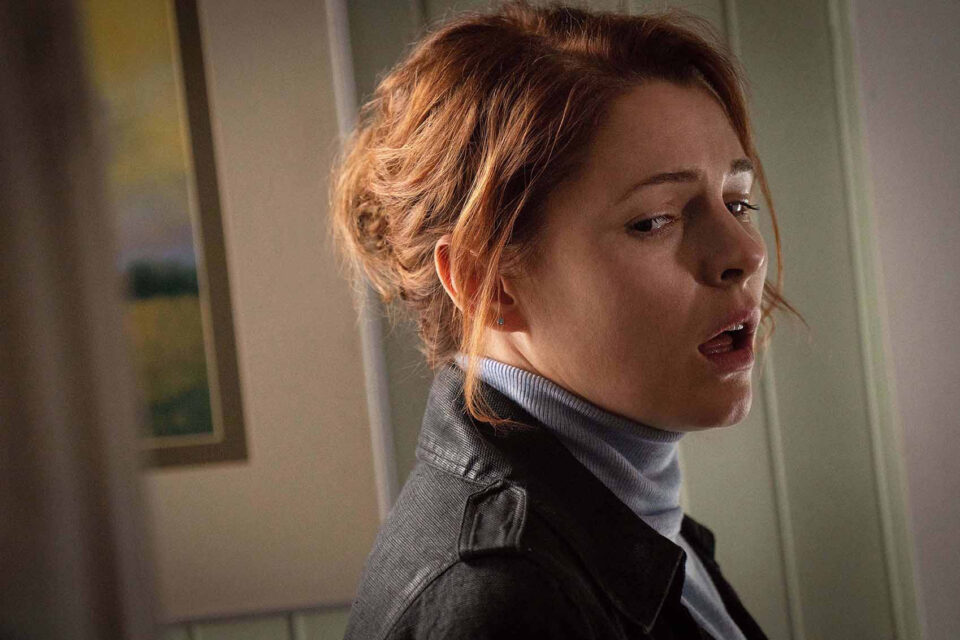
Amy Seimetz in Pet Sematary (Courtesy of Kerry Hayes/Paramount/Kobal/Shutterstock)
In terms of anxiety, how did you want the language of the filmmaking to express that? I noticed we don’t get a sense of closure with cuts from scene to scene.
Oh, completely. For me it’s a film about anxiety, and with anxiety there never really is closure. It just sort of dissipates. That’s how I wanted the film to move: expansions and contractions, and going to these extremely heightened moments and then just popping out of them. With the shot design, there’s a lot of close and intimate and very subjective realities, then popping out and realizing, “Oh, this is what it looks like to the outside world.” Then, in addition to that, there’s obviously the fear of death [and] fear of not getting everything done before I die.
And in dealing with having lost so many people close to me, there really isn’t ever closure to that. I lost my dad—I took care of him for a while. Intellectually I knew you couldn’t go into his office [anymore] because he’s not there. Emotionally, it lingers like he’s still there, because you just can’t grasp the finality of death. And then you’re left with your own mortality, so it’s not like you get a resolution and you’re like, “Well, I never have to deal with death ever again.” There only is sitting still with it and accepting it. Death doesn’t go away.
That also plays out with the anxiety about connecting with someone.
Definitely. Jen Kim, who plays Tilly in the movie, says: “I just wanted to connect with somebody or something.” I feel like that gets to me every time she says it. I had this conversation with [Steven] Soderbergh about this movie he made that should be coming out soon. He was basically like, “You know, that’s all life is. We have these conversations, we talk about what our day was like, and then you fucking die.” I was like, “Yeah! You’re speaking to the right crowd.” [Laughs] For a human being, in terms of fulfilling or assuaging that anxiety, it’s never quite enough. Even when you do connect with someone, the moment of the respite is fleeting because you’re always left with your own existential drift.
Yeah.
By the way, this sounds like my life is so dark. I laugh a lot! I find dark things incredibly funny. I find the cruelest joke is that we die. You’re alive and you’re conscious and you’re aware—and then it ends. It’s just so absurd! So I found it really important to include a sense of humor [in the movie], because it didn’t feel like it would be honest if I didn’t include a level of poking fun at myself for being self-indulgent in these moments.
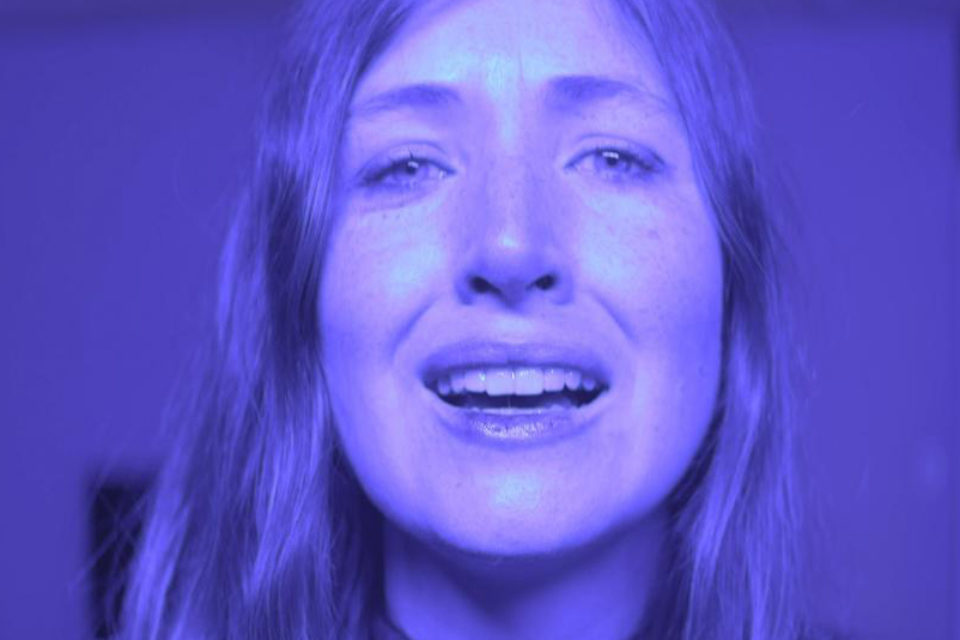
She Dies Tomorrow (Courtesy of Neon)
I love the gallows humor conversation when Jane Adams talks to the other afflicted strangers at the pool.
All Jane really wanted was for somebody to validate her feelings throughout the whole movie, and then suddenly it’s these strangers that are like, “Yeah, we’re dying,” and she’s like, “Thank you.” [Laughs] When I describe the way that I direct things in terms of a narrative arc, I always go back to what a tantrum feels like, where it’s the ramp-up to the tantrum, the complete outburst of emotion, and then that weird calm that happens after the storm. It’s almost so quiet because it’s gotten so loud, and this follows that format. We already went crazy and we’re still here—now what do we do?
That weird, flatlining what-do-we-do-now in the aftermath, which is really much or most of life.
Exactly. You have to live with what you just did, because emotions aren’t facts. That’s one thing I know. [Laughs] So whatever you do that’s driven out of emotion, just keep yourself in check, because you’re going to have to live with that decision.
In terms of genre and emotion, were you looking to follow horror beats in this movie?
I love genre in the way that you have a kind of agreement with the audience. The anticipation of something happening and either you subvert it or not. Obviously, I also really like subverting it so we could get to some deeper questions like, “Why am I scared?” This is a horror movie where you never get to see the monster. One of my favorite horror movies is Friday the 13th Part 2. You only see Jason once with a bag over his head, but it’s terrifying! That’s how I kept describing it to everyone on set. What I was trying to elicit [from actors] is not just fear and terror, but also this rush of every single emotion—your body getting flooded 100 percent. Whatever they describe death as: all of your hormones releasing into your body, and you have euphoria and happiness and sadness and fear and everything.
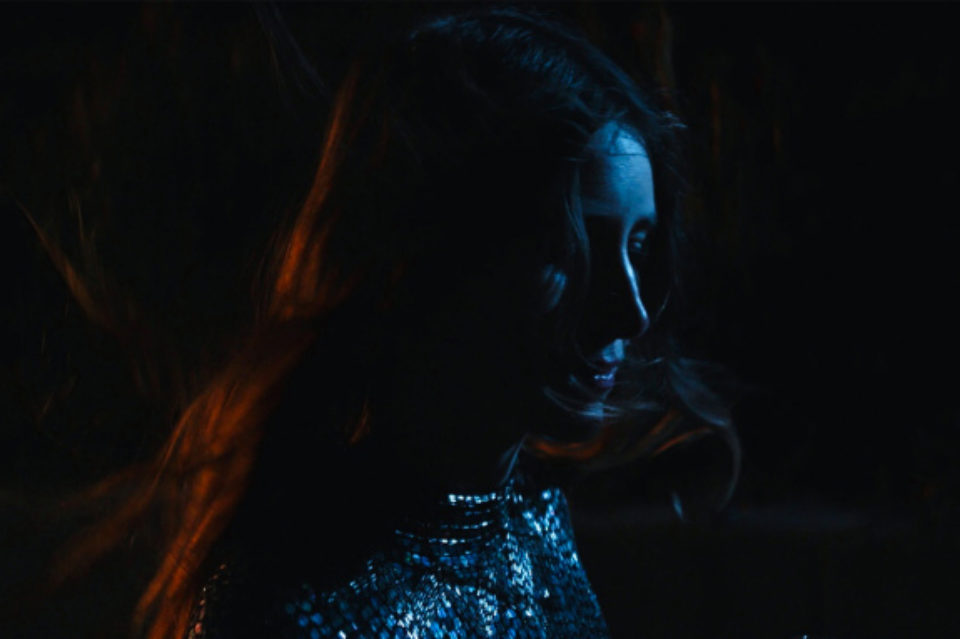
She Dies Tomorrow (Courtesy of Neon)
The agony and the ecstasy at the same time.
The sublime. Exactly.
Any other movies that also come to mind?
The films I’ve been thinking about are films I love, like those of Agnès Varda. I love Vagabond. Another that I stole consciously from is Cléo from 5 to 7. There were a few I discovered I was inspired by—not so directly, but stuck in my subconscious. In the last shot of High Life, I was like, “I feel like I have this shot in my movie already!” And I’ve always loved Buñuel, too.
What do you think of the movie in relation to the pandemic?
It’s interesting, because I’ve been having rolling waves of anxiety in almost the exact same roller coaster as in the movie. I made this [movie] without thinking about that. Every day now seems normal, then it’s not, then you go to pick up groceries and everyone is wearing masks and having to hose things down. [Beforehand] I caught myself having anxiety about this other thing and saying to myself, “I’m okay, I’m okay.” I realized that if I was okay, I wouldn’t be saying it out loud to myself. It’s okay to accept the fear if I’m really not okay. Everyone’s experiencing this collective “I’m okay, I’m not okay.” I will say, I’m not a scientist—the movie doesn’t come close to the level of insanity and terror and sadness we’re experiencing in reality.
Nicolas Rapold is the editor-in-chief of Film Comment and hosts The Film Comment Podcast.



